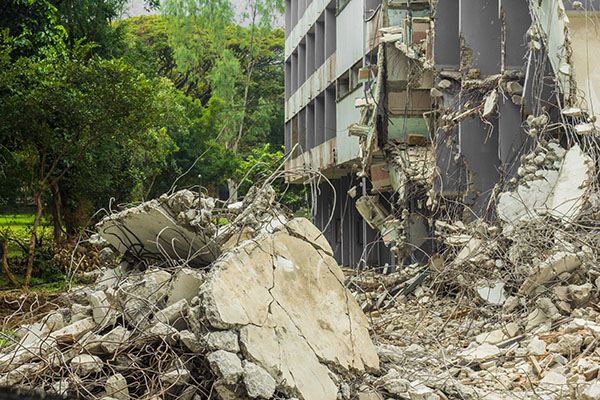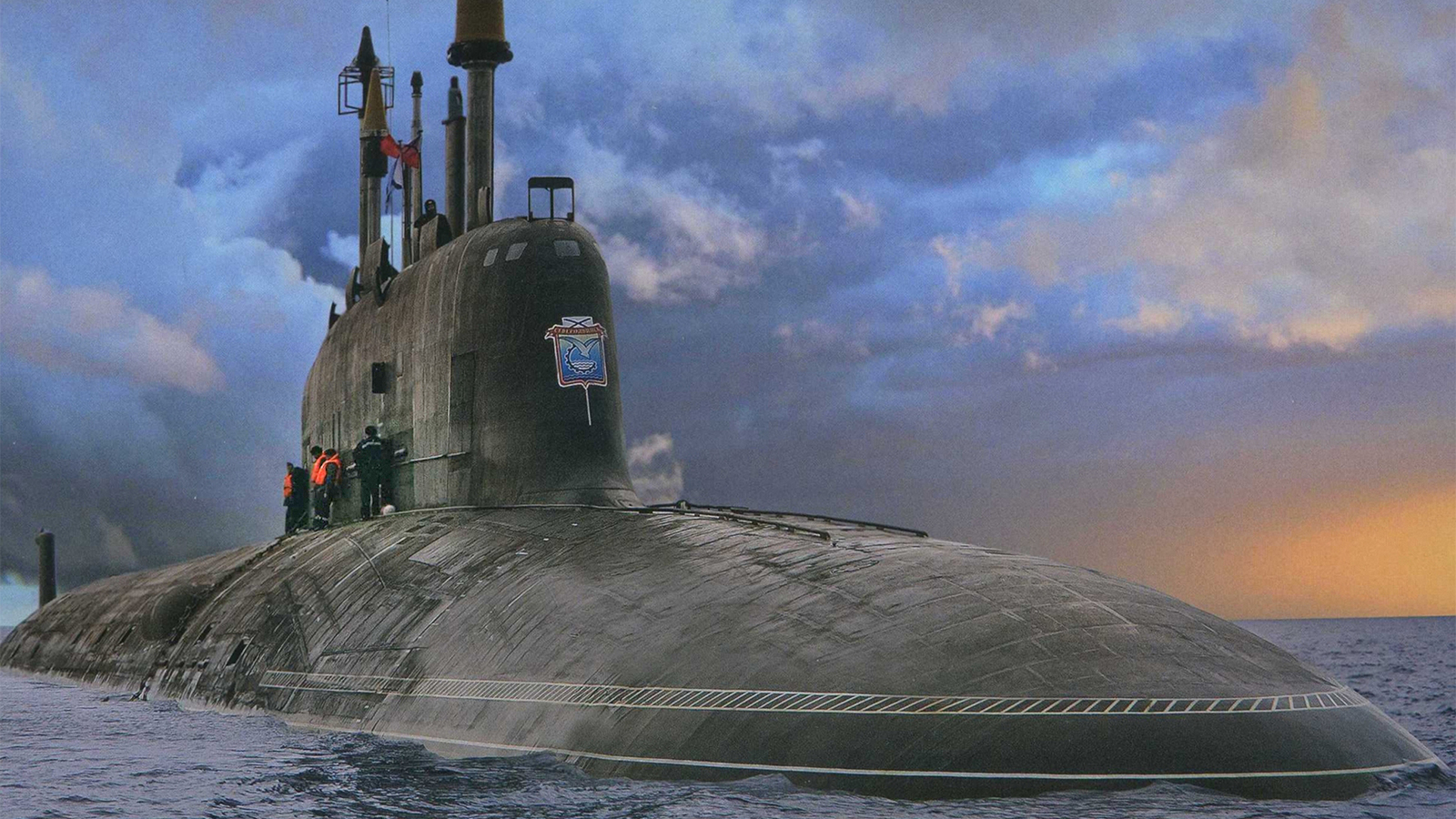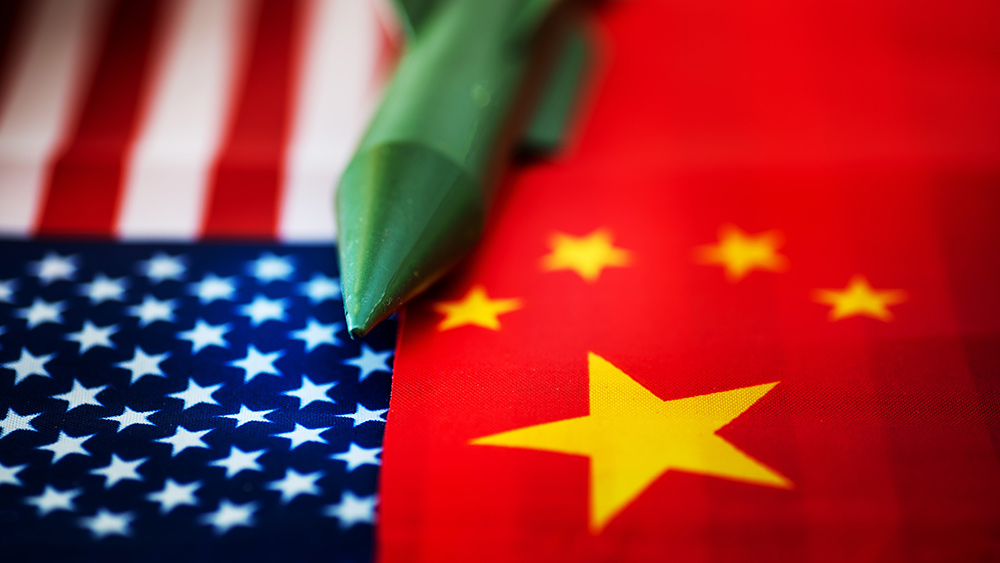China’s latest MAGNESIUM HYDRIDE BOMB: a new threat to global security
04/21/2025 / By Lance D Johnson

In a world where technological advancements often outpace ethical considerations, China’s recent success in developing a non-nuclear hydrogen bomb using magnesium hydride has sent shockwaves through the global community. The bomb, tested by the 705 Research Institute, a subsidiary of the China State Shipbuilding Corporation (CSSC), produced an intense fireball that lasted 15 times longer than a comparable TNT explosion, reaching temperatures exceeding 1,832 degrees Fahrenheit (1,000 Celsius). This breakthrough, while initially intended for peaceful purposes, has significant military and environmental implications that cannot be ignored.
Key points:
- China successfully tests a non-nuclear hydrogen bomb using magnesium hydride, producing an intense, long-lasting fireball.
- The bomb, developed by the 705 Research Institute, could have significant military and environmental implications.
- China is scaling up magnesium hydride production to 150 tons per year, raising concerns about safety and military applications.
- The US has recently announced a $1 Trillion military budget, likely to compete with military advances from China.
The science behind the new bomb
The key to this innovative bomb is magnesium hydride (MgH2), a material that can store an outsize amount of hydrogen. Originally, scientists were interested in magnesium hydride for its potential in clean energy and heat generation, particularly in off-grid locations and spacecraft propulsion. However, the material’s explosive potential was quickly recognized, leading to the development of the bomb.
The bomb’s unique properties are due to the chain reaction that occurs upon detonation. When the magnesium hydride is fractured by shock waves, it releases hydrogen gas, which mixes with ambient air and ignites, creating a self-sustaining loop of mechanical fracturing, hydrogen release, and thermal feedback. This results in a fireball that not only lasts longer but also spreads more uniformly, making it highly effective for destroying targets over vast areas.
Industrial-scale production and safety concerns
The implications of this technology extend beyond the bomb itself. China is now scaling up magnesium hydride production to an industrial level, with a new plant in Shaanxi province aiming to produce 150 tons of the material per year. This plant, developed by the Dalian Institute of Chemical Physics, completed its one-year pilot phase on January 10, marking a significant milestone in the production of magnesium-based hydrogen storage materials.
However, the production of magnesium hydride is not without risks. The process requires high pressures and temperatures, and any breach in the production chamber can lead to catastrophic consequences. The potential for accidents, such as the massive explosion at the chemical storage facility in Tianjin last August, which killed over 100 people and released toxic sodium cyanide into the environment, highlights the need for stringent safety measures and regulatory oversight.
Military and environmental implications
The development of this bomb and the scaling up of magnesium hydride production raise serious questions about China’s intentions and the global security landscape. While the bomb was tested on land, the 705 Research Institute is also exploring its potential use in submarine fuel cells, which could have far-reaching implications for naval warfare.
Moreover, the environmental impact of such technologies cannot be overlooked. The production and use of magnesium hydride, while promising for clean energy applications, must be carefully managed to prevent accidents and minimize environmental damage. The Tianjin disaster serves as a stark reminder of the potential consequences of industrial accidents involving hazardous materials.
As China continues to advance its military and technological capabilities, it is crucial for the international community to remain vigilant and demand transparency. The development of such powerful weapons and the industrial-scale production of potentially dangerous materials should be subject to rigorous scrutiny and international oversight.
In the words of the research team from the 705 Research Institute, “Hydrogen gas explosions ignite with minimal ignition energy, have a broad explosion range, and unleash flames that race outward rapidly while spreading widely.” This powerful statement underscores the need for responsible innovation and the importance of questioning the motives behind such advancements.
Sources include:
Submit a correction >>
Tagged Under:
China, Clean Energy, critical thinking, CSSC, Dalian Institute of Chemical Physics, Environmental Safety, global security, hazardous materials, Hydrogen bomb, hydrogen storage, industrial production, innovation, international community, Magnesium Hydride, military technology, naval warfare, propaganda, regulatory oversight, safety measures, technological advancements, Tianjin Explosion
This article may contain statements that reflect the opinion of the author
RECENT NEWS & ARTICLES
COPYRIGHT © 2018 MILITARYTECH.NEWS
All content posted on this site is protected under Free Speech. MilitaryTech.news is not responsible for content written by contributing authors. The information on this site is provided for educational and entertainment purposes only. It is not intended as a substitute for professional advice of any kind. MilitaryTech.news assumes no responsibility for the use or misuse of this material. All trademarks, registered trademarks and service marks mentioned on this site are the property of their respective owners.




















